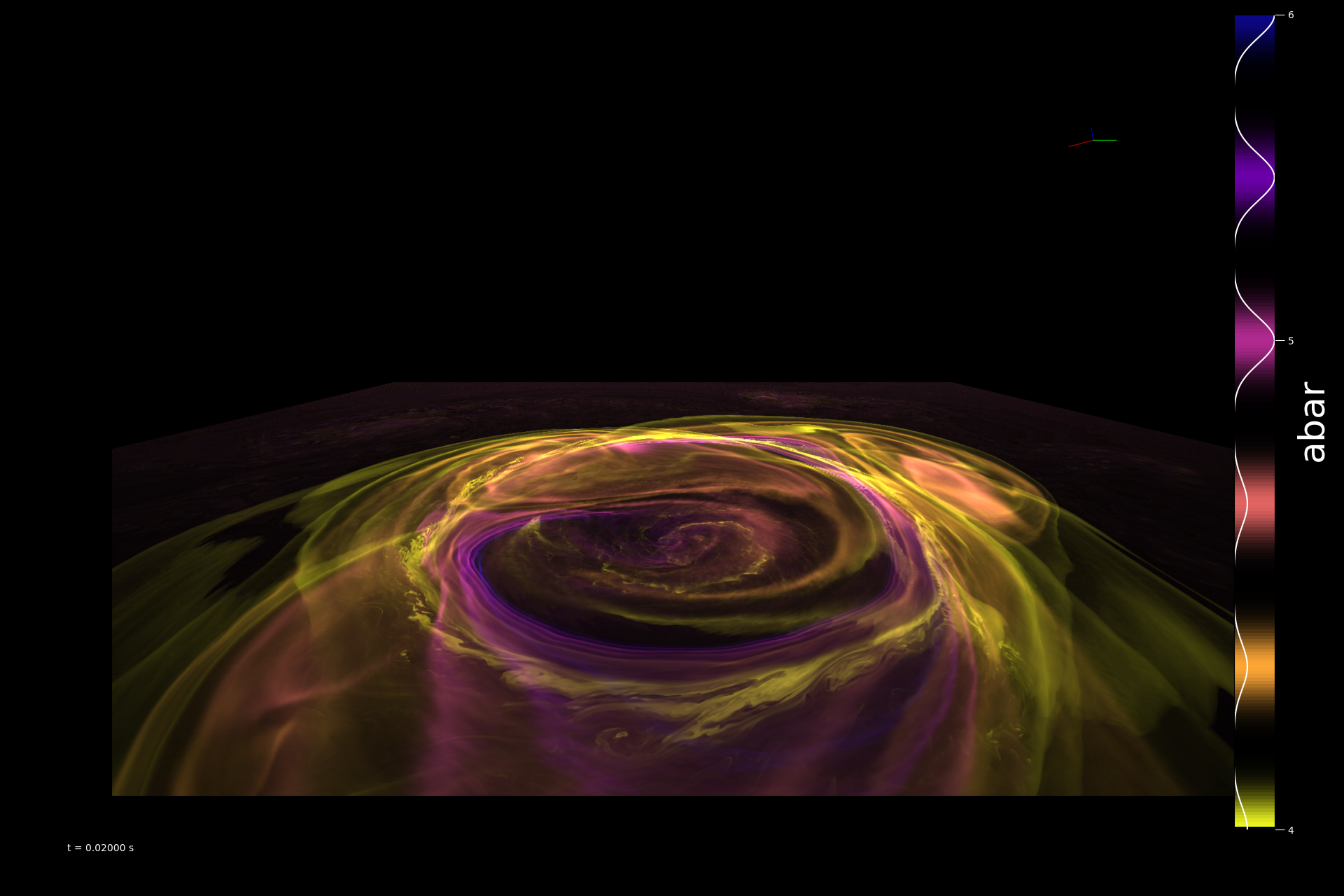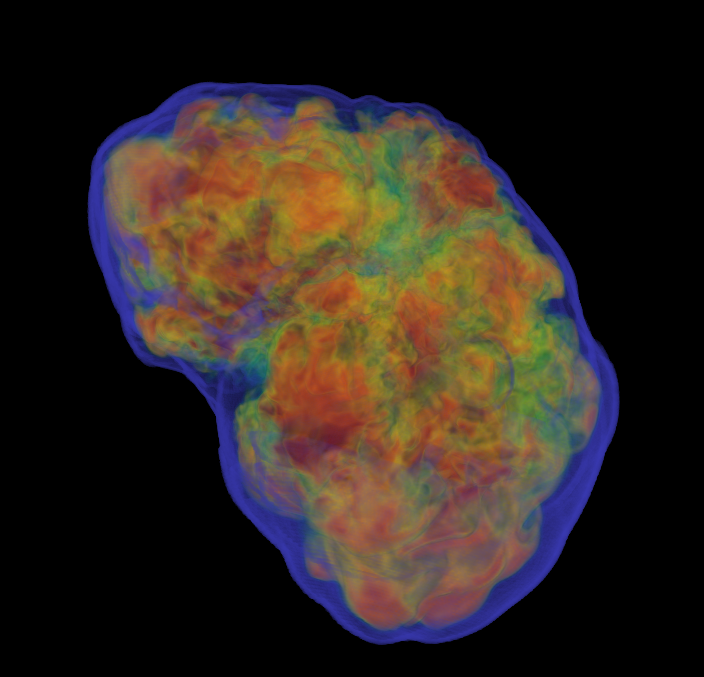Type Ia Supernovae
Castro has been used to model many different progenitor models of Type Ia supernovae.
Chandrasekhar model

A volume rendering of the magnitude of vorticity in a buoyant thermonuclear flame during a Type Ia supernova calculation at about 0.29 s after ignition. The bright rope-like structures trace strong vortex tubes, which are initially confined to a torus and then break apart to spread to both the flame surface and the ashes of the burning, as seen here. As turbulence sets in, the vortex tubes are stretched to thinner scales and fully permeate the flame, altering it's morphology and evolution. This image is from a calculation that was performed on both NCSA's Blue Waters and ORNL's Titan supercomputers.
- The Deflagration Stage of Chandrasekhar Mass Models for Type Ia Supernovae. I. Early Evolution, C. M. Malone, A. Nonaka, S. E. Woosley, A. S. Almgren, J. B. Bell, S. Dong, & M. Zingale, 2014, ApJ, 782, 11
Mergers and collisions
A volume rendering of the density after the merger of a 0.6 and 0.9 solar mass white dwarf. This image is from a calculation that was performed on ORNL's Titan supercomputer. The infrastructure for modeling white dwarf mergers is included with Castro in Castro/Exec/science/wdmerger.
- White Dwarf Mergers on Adaptive Meshes. I. Methodology and Code Verification, M. P. Katz, M. Zingale, A. C. Calder, F. D. Swesty, A. S. Almgren, & W. Zhang, 2016, ApJ, 819, 94
X-ray bursts
Castro has been used to model the spreading of flames across the surface of a neutron star as a model for X-ray bursts.

A voume rendering of a flame spreading from an initial hotspot. This view is taken from slightly above the surface and highlights the composition of the ash produced in the burning. The problem setup for these simulations is in Castro/Exec/science/flame_wave
- Comparing Early Evolution of Flames in X-ray Bursts in Two and Three Dimensions, M. Zingale, K. Eiden, & M. Katz, 2023, accepted to ApJ
- Dynamics of Laterally Propagating Flames in X-ray Bursts. II. Realistic Burning & Rotation, A. Harpole, N. M. Ford, K. Eiden, M. Zingale, D. E. Willcox, Y. Cavecchi, & M. P. Katz, 2021, ApJ, 912, 1, 36
- Dynamics of Laterally Propagating Flames in X-ray Bursts. II. Realistic Burning & Rotation, K. Eiden, M. Zingale, A. D. E. Willcox, Y. Cavecchi, & M. P. Katz, 2020, ApJ, 894, 1, 6
Core-collapse Supernovae
Castro + radiation can model the neutrino processes that drive the dynamics in core-collapse supernovae.

A voume rendering of the entropy distribution interior to the emerging shock wave (blue wrapping) in a 3D supernova explosion ~400 milliseconds after its onset. Red is high entropy and yellow is lower entropy. The bubble structure and anisotropy of such 3D explosions is manifest, as is the dominance as the explosion ensues of low-order dipolar modes. In this simulation, the explosion is inaugurated ~200 milliseconds after bounce by a constant driving neutrino source that heats the material behind the shock and drives the early expansion.
- An Investigation into the Character of Pre-Explosion Core-Collapse Supernova Shock Motion, A. Burrows, J. Dolence, & J. Murphy, 2012, ApJ, 759, 5
- Dimensional Dependence of the Hydrodynamics of Core-Collapse Supernovae, J. Dolence, A. Burrows, J. Murphy, & J. Nordhaus, ApJ, 765, 110, 2013